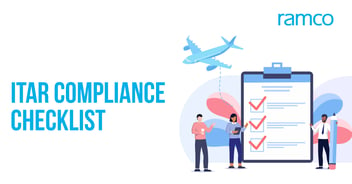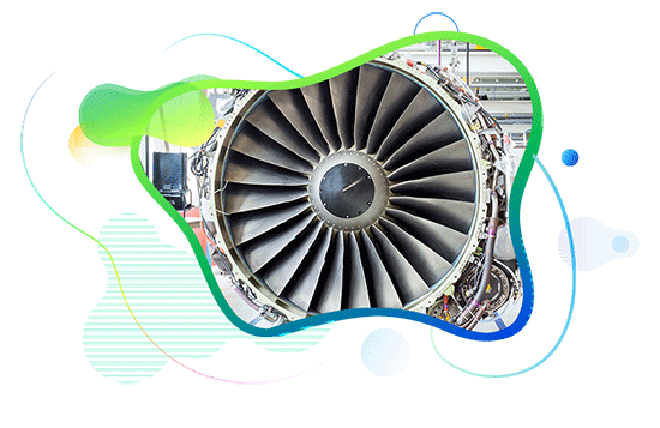
In the Aviation Industry, Spare Parts Management plays a vital role in achieving the desired availability of aircrafts. Some of the unique challenges faced during aviation spare parts management include moving assets, long and variable lead times, OEM dependencies, maintenance policies governed by regulators and demand unpredictability.
Material Planners, with the help of their systems, ensure that spare parts are available at the right place and in the right quantity. Assigning proper nomenclature and classifying the spares is a fundamental step for material planning.
Operators / MRO (Maintenance Repair & Overhaul) personnel either opt for OEM-defined identification, normally called Manufacturer Part # (MPN) or Internal Codified Identification. Identified spares are to be linked with its Interchangeable spares (INC) and classified in line with industry standards.
A few standard classifications followed in the Aviation industry and available as part of the Recommended Spare Parts List (RSPL) is as follows:
Identification and classification is done, it’s time for some mathematics. For instance, how many spares are required (Float) to support the fleet availability?
| Classification | Codes |
| Spare Parts Class Code (SPC) | 1-Expendable, 2-Rotable, 6-Repairable |
| Essentiality Code (ESS) | 1-No-Go, 2-Go, 3-Go-If |
| Interchangeability Code (INC) | 1-One Way, 2-Two Way, 3-Not Interchangeable |
Float requirement is basically the quantity of spares to be maintained to meet the desired service levels when there is an unexpected increase in demand or lead time to procure. Multiple factors like number of aircrafts, parts per aircraft, Mean Time Between Events (MTBE), line unscheduled removals, average utilization, TAT for repair (SPC-2 & 6) and TAT for purchases (SPC-1), expected service levels, scrap rates, and scheduled arising, based on the maintenance program govern the float requirement.
While the OEM provides original float recommendation in RSPL, the requirements can change over a period of time depending upon the number of aircrafts in operation, age of the aircrafts and actual scrap rates, utilization of aircrafts/engines, repair TAT depends on the purchase TAT and so on.
Proper classification and accurate float requirement helps in optimizing and positioning spares. For short-term float requirements for SPC 2 or 6 items, the preferred option would be taking an item on loan or pool. For long-term requirements, options like Power by Hour (PBH) are opted for. If the item is No-Go, PBH items are stocked in the operator / MRO warehouse, generally referred to as Home Base; and for Go-If / Go items, it can be accessed from the PBH vendor’s stocking location, generally referred to as Pool access.
Ramco Aviation Suite of M&E (Maintenance & Engineering) solution has an integrated material planning module that covers Float Management, Scrap Management, PBH Management, and Part-RSPL Data Management, which helps in increasing the service levels for the spare parts with optimized inventory costs.
Frequently Asked Questions (FAQs)
Enterprise asset management (EAM) involves the management of mission critical assets of an organization throughout each asset's lifecycle. EAM is used to plan, optimize, execute, and track the needed maintenance activities with the associated priorities, skills, materials, tools, and information. The aim is to optimize the quality and utilization of assets throughout their lifecycle, increase productive uptime and reduce operational costs.
Enterprise asset management (EAM) involves the management of the maintenance of physical assets of an organization throughout each asset's lifecycle. EAM is used to plan, optimize, execute, and track the needed maintenance activities with the associated priorities, skills, materials, tools, and information.
The software helps in effective maintenance of assets through preventive, predictive, shutdown and breakdown maintenance strategies. The system also helps enterprises mitigate equipment risks by enhanced safety standards. The streamlined operations and improved asset performance helps organizations increase their investment effectiveness.
EAM is important because it helps organizations track, assess, manage and optimize asset quality and reliability. Asset intensive Organizations have hundreds, thousands, even millions of assets which needs to be maintained to maximize / optimize life of these assets to increase the return on investment.
The key features of effective EAM are:
- Work management.
- Maintenance Strategies (Preventive/ Predictive / Breakdown / Shutdown).
- Planning and scheduling.
- Supply chain management.
- Health and safety.
- Mobility.
- Analytics.
- Improved Asset Health at reduced cost through data driven maintenance Programs
- Complete visibilityon entire maintenance data across Equipment, across Models, across Branches to aid in analysis & decision making such as to Repair or Replace the Equipment
- Insightful analysis of Inspection Data to improve customer satisfaction
- Effective maintenance management enhanced by predictive maintenance and inbuilt analytics
- Increased reliability and safety, keeps complete track of all the inspections & calibration schedules
- Mobile Application enables users to execute work while “in the field” leading to minimized non-productive time and increased productivity and reduces duplication of work and human errors in recording information.
- Quick turnaround time through Actionable Notification & Alerts for every process in real time and accessible anytime and anywhere.
- Improved Regulatory Part of asset management involves the implementation of better O&M practices, which can significantly improve compliance.
Asset Intensive companies under the following Industries :
- Ports
- Cement and Mining
- Utilities
- Fleet Maintenance
- Equipment Rental
- Other Manufacturing
- Real Estate & Infrastructure
- Power Generation
Contact us for a meeting and schedule a demo
This differs on case to case basis, based on the type of installation and unique industry specific requirements. Contact us for a meeting and schedule a demo.
This differs on case to case basis, based on the type of installation and unique industry specific requirements. Contact us for a meeting and schedule a demo.
Stay Connected, follow us on LinkedIn / Twitter to know more about EAM Software latest trends.


